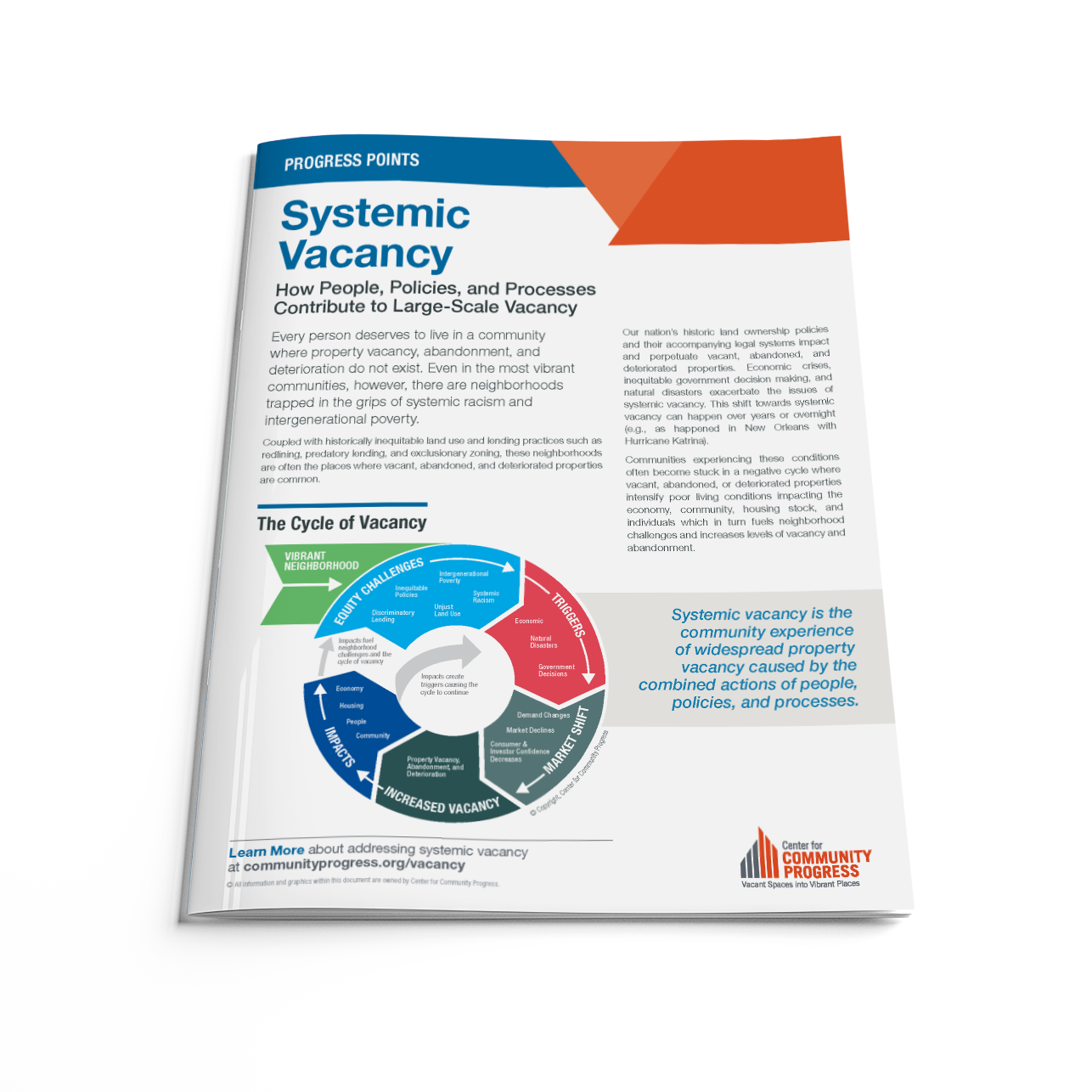
Progress Points: Systemic Vacancy
A Brief Primer
Topic(s): State & Local Analysis
Published: January 2022
Geography: United States
Author(s): Center for Community Progress
Every community has a few vacant properties. But when vacant properties become so widespread that they completely change how a neighborhood looks and feels, that neighborhood becomes trapped in the harmful cycle of systemic vacancy.
Because of a legacy of unjust policies and racist systems, empty structures and lots remain in certain communities for years, deteriorating in condition, weakening the housing market, driving residents out of the neighborhood, and fueling more vacancy. These vacant, abandoned, and deteriorated properties, sometimes called “blighted” properties, become so widespread that doing anything about them at scale feels extremely difficult.
Historically inequitable land ownership policies, lending practices, and legal systems lead to neighborhoods where vacant, abandoned, and deteriorated properties are common. Systemic vacancy takes root over years, but global crises (like the pandemic and the Great Recession) and natural disasters (like hurricanes) hit communities experiencing these equity challenges harder, creating more vacant properties.
As vacant, abandoned, and deteriorated properties spread, the quality of life worsens in neighborhoods, impacting the local economy, property values, and quality of housing stock. Shifts in the market such as demand changes, market declines, and decreases in consumer and investor confidence fuel the negative cycle.
High levels of vacancy and abandonment hurt the physical and mental health of the community, reduce individual wealth, and strain local government finances. This triggers more abandonment, more disinvestment, and deepens the equity gap.
Topic(s): State & Local Analysis
Published: January 2022
Geography: United States
Related Publications
Other Related Content
Subscribe to join 14,000 community development leaders getting the latest resources from top experts on vacant property revitalization.
